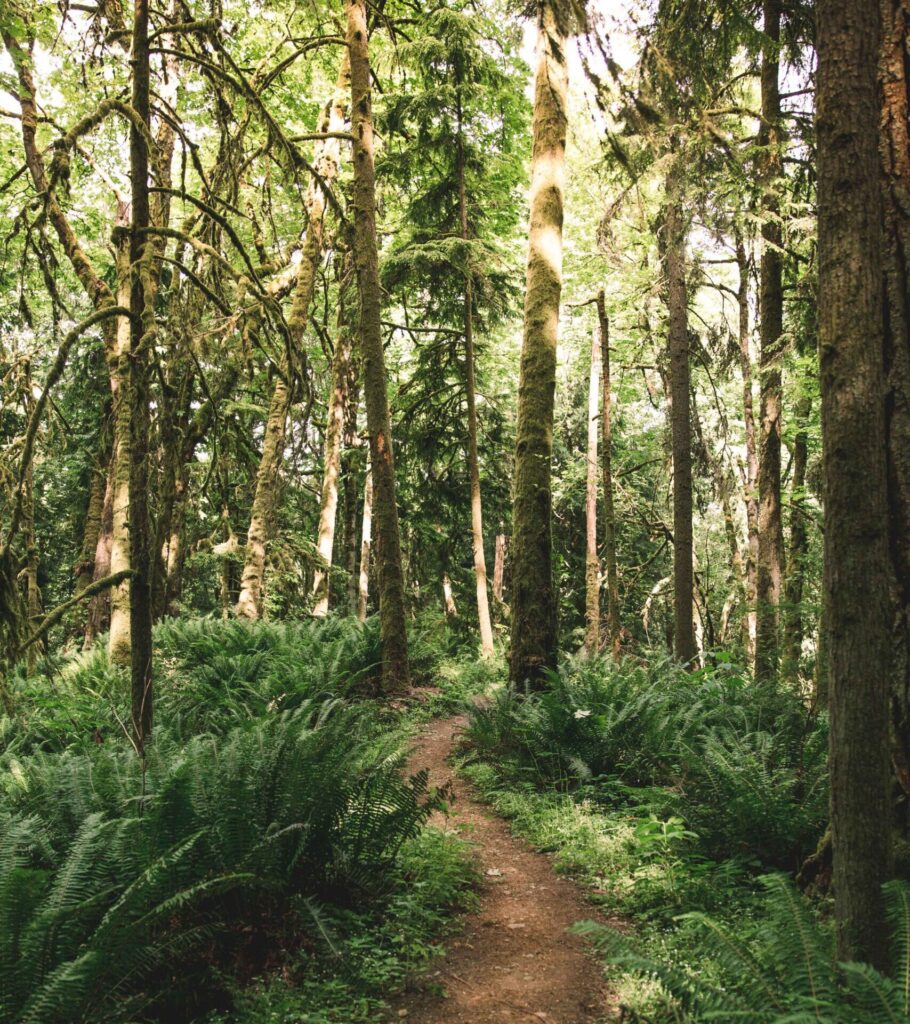On a warm, sunny Wednesday in June, a handful of Pachama team members ventured out to a parcel in the King County Parks forest carbon project. Located in Cougar Mountain Regional Wildland Park, the project is just a 30-minute drive from downtown Seattle, WA. This 120-year-old parcel stores around 500 tons of CO2e per acre, making it a crucial nature-based climate solution.
The Pachama team carpooled out to the project to learn more about the forest from Program Manager Kathleen Farley Wolf and Land Conservation Project Manager Anne-Gi Chan. They educated the team on how it’s set up, why carbon revenues are so important, and the amazing benefits of preserving these local forest ecosystems.

About the project
Faced with the reality of booming urbanization in the region, King County launched the Land Conservation Initiative (LCI) in 2018, with the goal of protecting 65,000 acres of forest over the next 30 years. To do it, they’d need a mix of financing and funding mechanisms. A key one? Carbon credits.
The King County Forest Carbon Program advances the region’s 30-year goal to protect this critical forest land. Revenues from carbon credits speed up their buying timelines helping the county purchase additional land parcels. For example, King County is currently in the process of buying a few parcels with the revenues from their first carbon credit purchases using a one-to-one match.

Forest management practices
One of the most important missions for this carbon project is making sure that forests reach a mature, old-growth state. This is where the benefits for carbon, biodiversity, and environmental impact start to shine.
It’s not always easy to do. Many of the parcels in the project contain Alder, which is overrepresented compared to the historical landscape and, due to its short lifespan, is not ideal for long-term carbon storage. To promote more sustainable growth, King County replaces degraded Alder trees with longer-lasting native species and selectively thins Alders in certain parcels.
The team also works closely with CalFIRE to reduce potential fire consequences and monitors how climate change is changing which types of trees succeed in different environments.

Benefits beyond carbon
Beyond sequestering carbon, the King County Parks carbon project has a number of co-benefits, including:
- Improved waterways
- Habitat for local wildlife
- Green space for local communities
- Training for private landowners
Improved waterways
Conserving and improving existing forest land helps strengthen King County’s waterways, both in terms of quality and quantity. Many streams flow from the project down into Lake Sammamish, helping local salmon populations thrive. Conserving this high-priority forest land also improves shading in wetland areas, keeping stream temperatures lower.
Habitat for local wildlife
With much of the region becoming increasingly fragmented and over-paved, conserving large parcels of healthy forest maintains wildlife corridors for cougars, black bears, bobcats, elk, and other wildlife in the area. King County has worked hard to protect and bring back local salmon and trout populations.

Green space and landowner training
As an added bonus, preserving these stretches of forest brings a number of physical and mental health benefits to local communities, giving them green spaces to gather, relieve stress, relax, and allow children to learn and play outdoors. King County also works with private landowners to help them develop stewardship plans, and training on more sustainable forest management.
Want to learn more?
Read more about King County Parks or connect with a Pachama team member below.
Ready to learn more?
Get in touch with our team to learn how we can help you invest in tech-verified projects or start your own project from the ground up.






